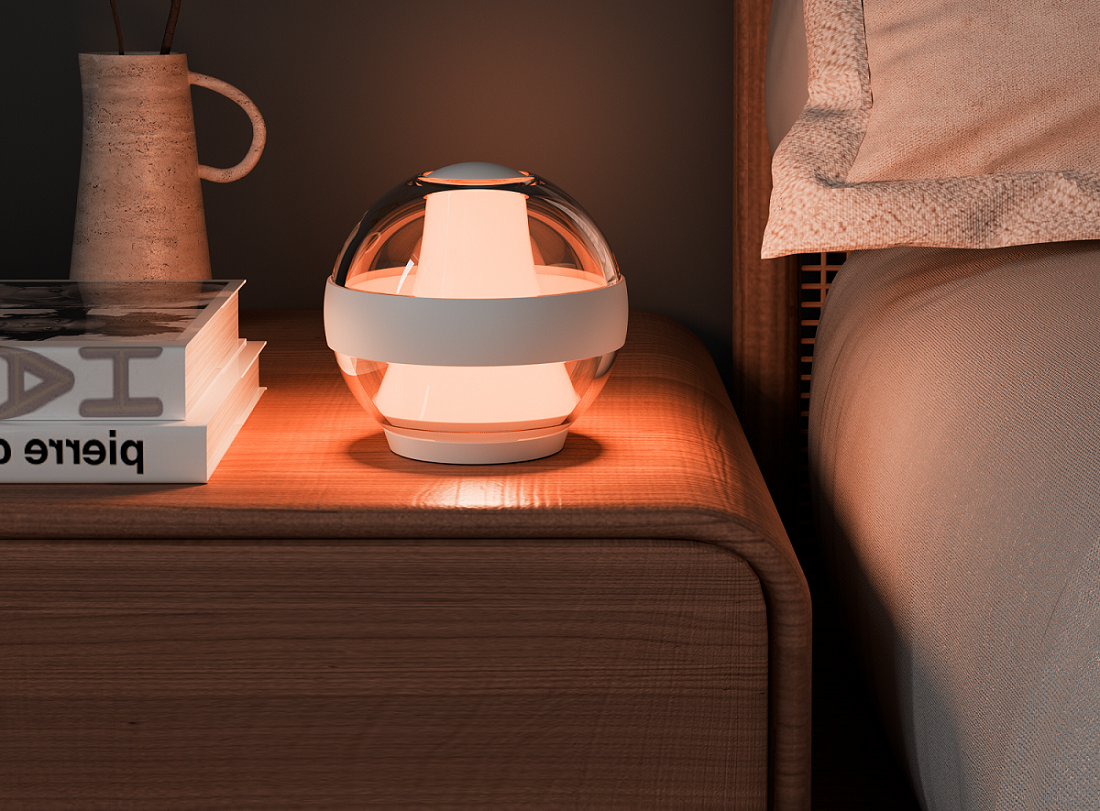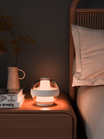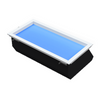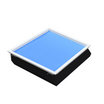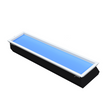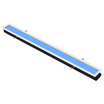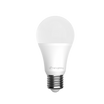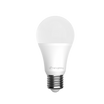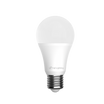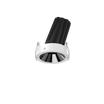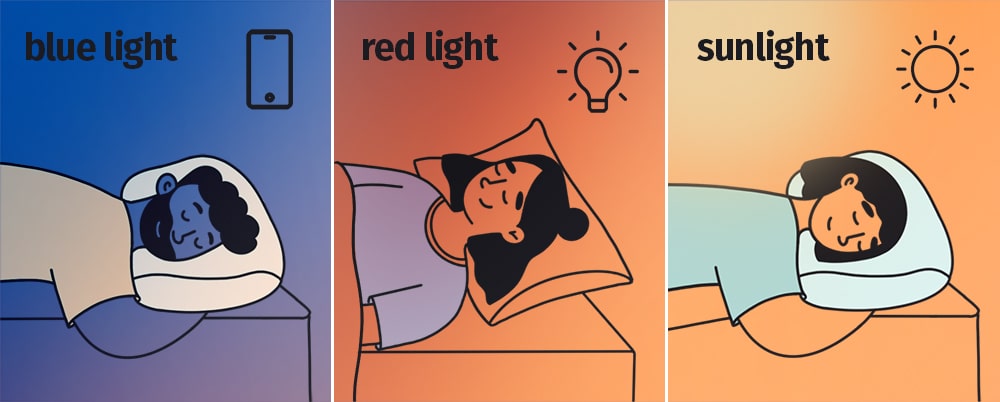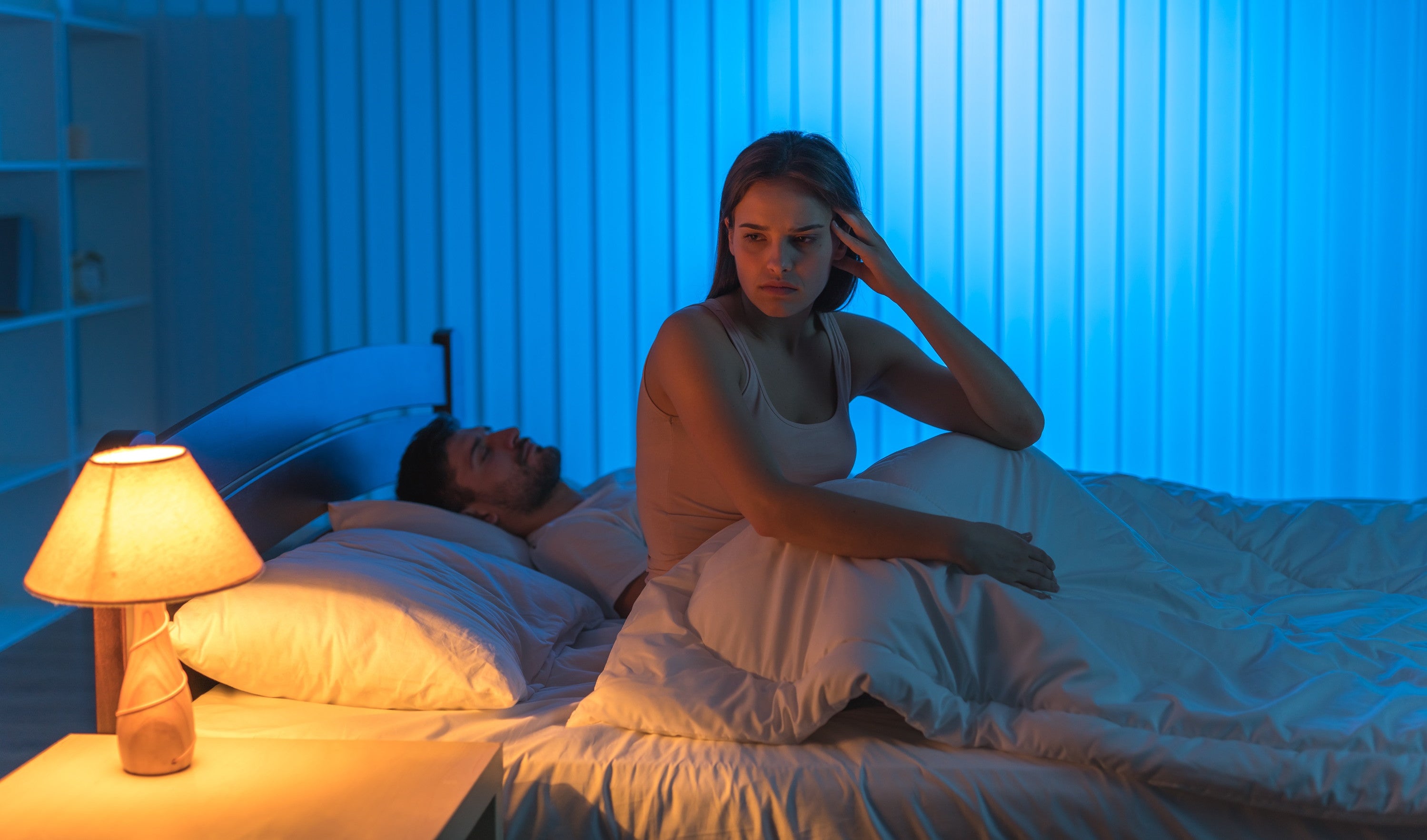Bad light causes sleep disorders
Sleep disorders are a pressing global health concern that's closely linked to lifestyle factors and environmental variables.
Notably, exposure to certain types of artificial light, especially at night, has surfaced as a significant antagonist to healthy sleep patterns. Society's increasing reliance on artificial lighting and screen-based devices has extended our exposure to “daytime” lighting into the nighttime. This change has triggered an investigation into the role of light exposure in sleep disorders.
Crucially, Intrinsically Photosensitive Retinal Ganglion Cells (ipRGCs) play a pivotal function here. These cells respond particularly to the 480 nanometers wavelength, found predominantly in the blue light spectrum. This specific frequency, if exposed typically to during the night, interferes with the natural sleep-wake cycle and is, therefore, a significant factor in sleep disorders.
Good light supports healthy sleep
While artificial lighting can disrupt sleep cycles, not all lighting is harmful. Properly managed exposure to light can help regulate our sleep-wake patterns and improve overall sleep quality.
An important part of this regulation comes from the Melanopic Daytime Response (MDR), and the Melanopic/Photopic (M/P) ratio MDR exposure during the day can promote alertness and mood, assisting in maintaining a healthy sleep-wake cycle. Conversely, by ensuring a low M/P ratio in the evenings, the lighting environment can promote relaxation and readiness for sleep.
The key lies in managing our exposure to light throughout the day, maximising natural light during daylight hours, and minimising exposure to certain wavelengths at night that can disrupt sleep-promoting hormones.
Sleep disorders can be fixed by regulating blue light and improving circadian rhythms
Our internal circadian clock, which aligns with the natural 24-hour day-night cycle, primarily governs our internal sleep-wake patterns. The Clock is influenced by various factors, one of which, as we have seen, is the Melanopic Daytime Response (MDR), concerning melanopic illuminance in daylight, which significantly impacts our alertness and mood throughout the day. However, an irregular MDR, such as exposure to high MDR levels during the night, can severely disrupt our sleep schedule, vividly demonstrating the strong connection between lighting conditions and sleep health.
Artificial screens and certain forms of LED lighting tend to emit high energy blue light enriched with 480 nm wavelength, which has a profound impact on sleep health.
Studies have shown that the wavelength is critical in evoking reactions from Intrinsically Photosensitive Retinal Ganglion Cells (ipRGCs) to signal the brain's sleep and wake cycle. Yet, excessive exposure, particularly at night, suppresses the secretion of melatonin, the hormone that commands our sleep.
Melanopsin, a pigment found within the ipRGCs, is highly photosensitive to the blue light spectrum. Consequently, the blue light can stimulate activity in ipRGCs even in low light conditions. This disrupts our internal sleep-wake cycle by artificially extending "daylight", thereby delaying the onset of sleep and reducing the quality and duration of sleep.
This association between blue light exposure and sleep disorders has triggered discussions around developing guidelines for limiting screen time before bed and adjusting artificial lighting to ensure it supports rather than conflicts with our natural rhythms.
[More insights on this topic can be found in the Second International Workshop on Circadian and Neurophysiological Photoreception by CIE]
A promising approach to rectify sleep disorders is to regulate blue light exposure and consciously adjust our interaction with light throughout the day. This includes maximizing exposure to daylight during the day, decreasing screen time in the evening, and modifying our artificial lighting environment to accommodate the M/P ratio. This ratio pertains to the comparison between melanopic EDI (light intensity to which melanopsin and ipRGC cells are most sensitive) and photopic illuminance (human eye's response to light during daytime vision). Balancing this ratio could help in managing the influences of light on our circadian rhythms, promoting better sleep quality and overall well-being.
What to consider in artificial lighting that affects your healthy sleep?
News and Updates
To mitigate the potentially harmful impacts of artificial lighting on sleep, correlative factors such as Color Temperature (CCT) play a role in influencing our circadian rhythms. Artificial lights with a low CCT (between 2200K to 2700K) can create a relaxing ambiance, conducive to sleep.
Brightness
Brightness is another vital factor. Ensuring the right level of brightness during different periods of the day can maintain the balance of our internal body clock.
Overly bright lights during the evening might disrupt the circadian rhythm and affect sleep.
Flicker
The quality of artificial lighting is also crucial. Flickering lights often lead to headaches and eye strain, disrupting our sleep. Hence, non-flickering lights are highly recommended.
BIO specs
Lastly, artificial lights with tailored spectral power distributions like Melanopic/Photopic ratio (M/P ratio), can cater to specific biological needs. Lights with reduced blue light components for evening use, can enhance sleep quality by preserving the natural rhythm of our melatonin production.
For a deeper understanding of these lighting considerations, [link here]
Insights
- ipRGCs -> Intrinsically Photosensitive Retinal Ganglion Cells (ipRGCs) play a crucial role in the regulation of circadian rhythm through their light-responsive capabilities. They are particularly sensitive to blue light and are involved in non-visual responses to light, impacting sleep, alertness, and mood.
- 480 nm -> The 480 nanometers wavelength, which falls into the blue light spectrum, has been found to be particularly influential on circadian rhythm. The ipRGCs mentioned above are most reactive to this wavelength. This specific frequency can interfere with the body’s natural sleep-wake cycle, particularly when exposed to it during the night.
- Melanopic EDI -> Equivalent Daylight Illuminance (EDI) is a measure designed to account for the specific sensitivity of melanopsin, a pigment found in the ipRGCs. Melanopic EDI refers to the light intensity concerning the 480 nm wavelength to which melanopsin and ipRGC cells are most sensitive. It's a way to gauge how light exposure could affect our biological clock.
- MDR -> Melanopic Daytime Response is related to the melanopic illuminance in daylight, which affects our alertness and mood during the day. High MDR levels raise alertness and mood, but exposure to high levels during night-time can disrupt our sleep.
- M/P ratio -> Melanopic/Photopic ratio pertains to the comparison between the melanopic EDI (how much melanopsin is activated by a certain light source) and photopic illuminance (human eye's response to light during daytime vision). High M/P ratios follow a daytime spectrum, contributing to alertness, while low M/P ratios resemble nighttime spectrums, therefore promoting relaxation and sleep.
- Secretion of melatonin -> Melatonin is a hormone primarily released by the pineal gland at night and has been associated with the regulation of the sleep-wake cycle. The production and release of melatonin are influenced by light and darkness; darkness stimulates its secretion, which promotes sleep, while light inhibits it, promoting wakefulness. Disruption of melatonin secretion can adversely affect sleep patterns and overall health.
- Melanopsin -> Melanopsin is a type of photopigment found in the ipRGCs. It is particularly sensitive to blue light in the 480 nm range. When exposed to light, melanopsin triggers a signalling pathway in the ipRGCs, which then sends signals to the brain, orchestrating several non-visual responses, such as adjusting the body's circadian rhythm and pupil constriction.
- Photopic Illuminance -> Photopic illuminance refers to the measurement of light as perceived by the human eye under well-lit conditions, typically during daylight hours. It is based on the spectral sensitivity of the cones in the eye, which are the primary receptors for colored, bright-light vision. This measurement is crucial in evaluating lighting conditions in various environments, such as workplaces or schools, to ensure comfort and efficiency.
FAQ
Frequently asked qustiones about this research
How does evening light exposure contribute to sleep disorders?
Evening exposure to bright or blue light can trick our internal biological clock into believing it's still daytime. This can delay the secretion of melatonin, the hormone that helps induce sleep, disrupting your sleep onset and sleep quality.
Can certain types of lightactually promote better sleep?
Yes, certain wavelengths of light, particularly the warmer tones that mimic sunset, can help your body wind down and prepare for sleep. Adjusting your night-time lighting to these softer, warmer tones can aid in enhancing sleep quality.
To know more about it check our FlameWarm Technology with SERENITY: The Light Engineered for Your Wellbeing Journey!
How does screen timebefore bed impact sleep?
Most digital screens emit high levels of blue light. This type of light exposure close to bedtime can interfere with your body's preparation for sleep, making it harder for you to fall asleep and leading to poor sleep quality.

